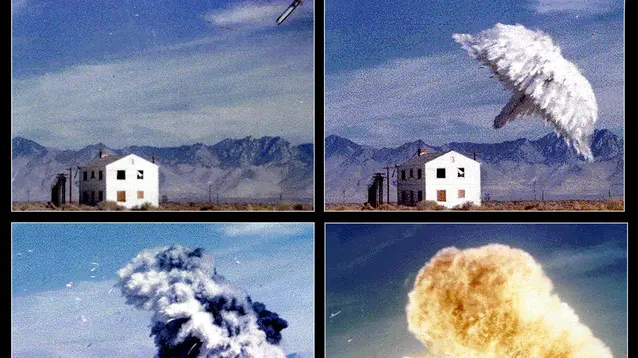Mosca, testata termobarica su mercenari di Kiev nel Kursk

This four picture package obtained from the Federation of American Scientists 04 March 2002 shows a Fuel/Air Explosive (FAE) bomb exploding at an unidentified test site, which is a similar weapon to the BLU-118B thermobaric bomb being used by the US military. The BLU-118B is capable of penetrating deep underground to reach hidden command bunkers or caves, according to experts and defense officials. "It works as a combination of a shock wave and a fuel explosion," said Navy Lieutenant Commander Matthew Klee, a spokesman for the Central Command. "The first explosion spreads flammable aerosols through the underground complex. Then, the second ignites the fuel." Klee told AFP the bomb was among 80 pieces of ordnance dropped by US warplanes on the area where intelligence had discovered a concentration of Taliban and al-Qaeda fighters. According to independent experts, the bomb, once detonated, produces rapidly expanding shock waves flattening anything near the epicenter of the aerosol fuel cloud and is capable of causing extensive damage far beyond the immediate strike area. The shock waves produced by the BLU-118S are capable of navigating underground labyrinths and literally leaving no stone unturned, according to Klee. "When the shock wave from a normal bomb hits a wall it stops," said the spokesman. "With BLU-118, the shock wave goes around the corner." AFP PHOTO/Federation of Amercan Scientists
AA
ROMA, 10 AGO - Il ministero della Difesa russo ha annunciato di avere colpito con un missile a testata termobarica il sito di dispiegamento di mercenari stranieri nella periferia meridionale di Sudzha, nella regione di Kursk. Lo riporta Interfax. Le armi termobariche sono composte quasi al 100% da combustibile esplosivo che risucchia l'ossigeno e sono notevolmente più potenti - e la loro esplosione dura più a lungo - degli esplosivi convenzionali dello stesso peso.
Riproduzione riservata © Giornale di Brescia
Iscriviti al canale WhatsApp del GdB e resta aggiornato
Argomenti
